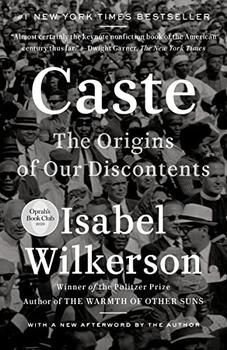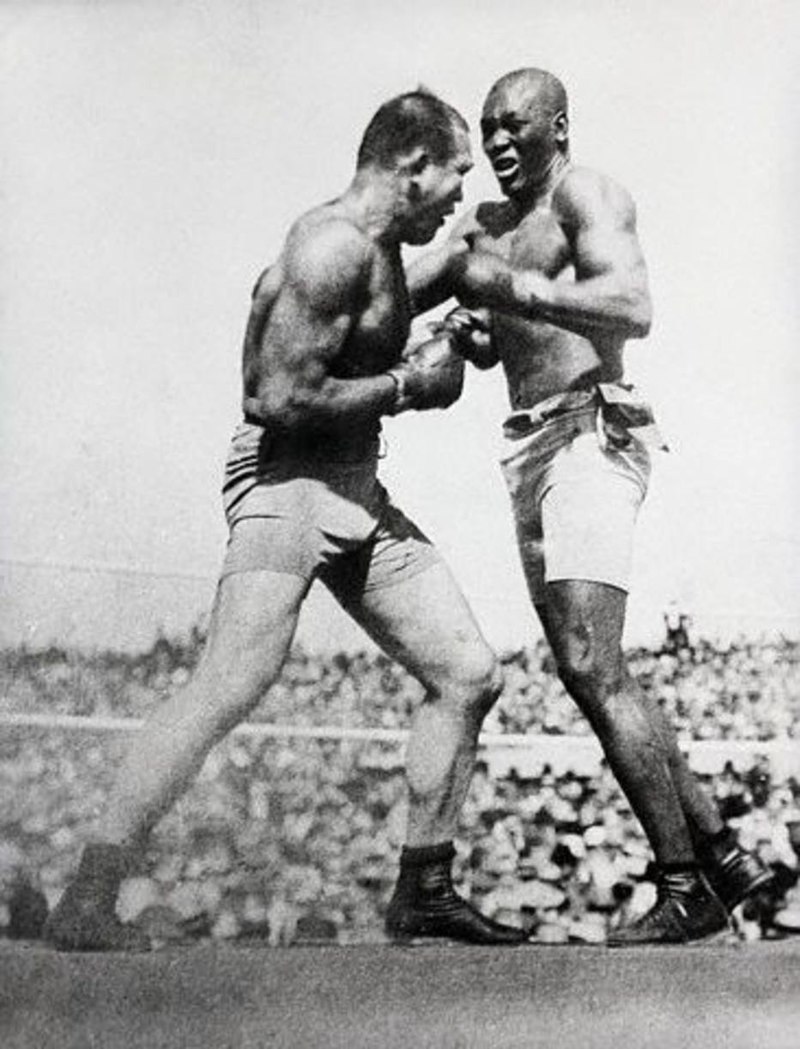Summary | Excerpt | Reading Guide | Reviews | Beyond the Book | Read-Alikes | Genres & Themes | Author Bio

Critics' Opinion:
Readers' Opinion:
First Published:
Aug 2020, 496 pages
Paperback:
Feb 2023, 512 pages
 Book Reviewed by:
Book Reviewed by:
Grace Graham-Taylor
Buy This Book
This article relates to Caste
 In Caste: The Origins of Our Discontents, Isabel Wilkerson describes how, in a caste system, challenges to the superiority of the dominant caste can produce "an epic existential crisis." This is particularly true for the people situated at the bottom rung of the dominant caste group (in the United States, working class or impoverished whites) for whom the status of superiority is most precious. In the logic of caste, she writes, "equality feels like a demotion," as when a member of the inferior caste becomes successful, "the natural human response from someone weaned on their caste's inherent superiority is to perceive a threat to their existence, a heightened sense of unease, of displacement, of fear for their very survival." In 1910, one such status threat occurred in the form of a boxing match when Jack Johnson, the first Black Heavyweight Champion of the World, defended his title by defeating James Jeffries, a white fighter. In response to Johnson's victory, violence erupted in cities all across the U.S.
In Caste: The Origins of Our Discontents, Isabel Wilkerson describes how, in a caste system, challenges to the superiority of the dominant caste can produce "an epic existential crisis." This is particularly true for the people situated at the bottom rung of the dominant caste group (in the United States, working class or impoverished whites) for whom the status of superiority is most precious. In the logic of caste, she writes, "equality feels like a demotion," as when a member of the inferior caste becomes successful, "the natural human response from someone weaned on their caste's inherent superiority is to perceive a threat to their existence, a heightened sense of unease, of displacement, of fear for their very survival." In 1910, one such status threat occurred in the form of a boxing match when Jack Johnson, the first Black Heavyweight Champion of the World, defended his title by defeating James Jeffries, a white fighter. In response to Johnson's victory, violence erupted in cities all across the U.S.
Stoked by goading media commentators who had exacerbated the racial implications of the fight, ordinary white citizens attacked, and in some cases killed, ordinary Black citizens. The reaction to the fight was so severe that many states quickly banned film showings of the match, and a law was passed by Congress that made it illegal to transport boxing footage across state lines.
Born in 1878 in Galveston, Texas to blue-collar parents who had once been slaves, Johnson began participating in boxing matches at age 15. At the time, Galveston was racially mixed. Reminiscing on his youth, he stated, "As I grew up, the white boys were my friends…No one ever taught me that white men were superior to me." Johnson's career turned professional in 1897, and in 1903 he won the World Colored Heavyweight Championship — a title reserved for Black boxers at a time when opportunities available to white fighters were often closed off to them. Proud, vivacious and quick-witted, Johnson was known for his cocksure personality along with his boxing talents. He refused to defer to the racist ideology of the time, flaunting his wealth and marrying interracially.
Johnson's reputation continued to grow, but his career was often stalled by white fighters refusing to accept his challenges. Unlike many other aspects of American life at the time, boxing was not officially segregated. But white fighters were known to draw the "color line" in order to avoid having to fight (and potentially lose to) Black pugilists, particularly when there were high stakes involved. While accepted in practice, drawing the color line was considered by many to be an act of cowardice and a hindrance to the sport. One 1903 Washington Post article suggested that a white fighter's refusal to take on a Black opponent amounted to "nothing more or less than a case of fear."
Despite the obstacles he faced, Johnson managed to secure the Heavyweight Championship in 1908 by defeating Tommy Burns, a white Canadian. Burns had initially refused to fight Johnson, but eventually conceded after two years of hounding from Johnson and the press. Johnson defeated him easily. In doing so, he became the first Black Heavyweight Champion. The event was widely publicized, with commentators, including the novelist Jack London, accentuating the racial symbolism of Johnson's victory. London provocatively wrote that Johnson "proved that in the ring he was the master of the white man." Similarly, the Chicago Daily Tribune reported that "The victory of Jack Johnson over Tommy Burns…yesterday dethroned the white man from the place he appeared destined to hold."
The inflammatory nature of these comments stoked racial tensions that simmered beneath the surface of American life and stirred up anger amongst the white public. A Black Heavyweight Champion was portrayed as a threat to the social order, perhaps to civilization itself. Some began to call for a white contender who could defeat Johnson and win back the title for the white race. The onus eventually fell on James "The Boilermaker" Jeffries, a former Heavyweight Champion who had retired undefeated in 1905. Jeffries had been a formidable fighter in his day but now, at age 35, he was out of shape, spending most of his days tending to his alfalfa farm in California. However, with pressure mounting and the promise of a large sum of money if he were to participate, Jeffries agreed to the fight. "I am going into this fight," he said, "for the sole purpose of proving that a white man is better than a Negro." Reporters began calling the match "the fight of the century," and named Jeffries "the great white hope."
The Johnson–Jeffries fight was one of the most anticipated in boxing history. All over the country, crowds flocked to wherever they would be able to hear the latest results. The event took place on July 4, 1910 in Reno, Nevada, where 20,000 spectators gathered to watch. Thousands of dollars were bet on the outcome, and Jeffries was the favorite. However, once the fight started, it quickly became apparent that Johnson was the superior fighter. Jeffries, well past his prime and hopeless against the nimble shimmying of Johnson, left the ring with his face in a bloody pulp after 15 rounds. The "great white hope" was defeated.
It's impossible to know if the wave of violence that erupted after Johnson's victory would have been so drastic had the media not framed the fight in such blatantly racial terms. Al-Tony Gilmore, a Johnson biographer, posits that "the press inflamed the populace" and "created a situation that demanded certain reactions." Whatever the case may be, the nationwide riots following Johnson's victory led to death and assault for a number of Black Americans. Between 11 and 26 people are thought to have been killed in the riots. Many more were attacked and beaten.
Many Black people were afraid to celebrate the victory, and some resented Johnson for incurring the wrath of the white populace and leaving them to deal with the consequences. However, despite the persecution that it engendered, his victory was also a symbol of power and hope. The fears provoked among the white majority were accurate in the sense that Johnson's win did indeed show that white supremacy was nothing but a senseless myth.
Ultimately, the public reaction to the match serves to highlight the danger of caste mentality. Johnson and Jeffries bore the entire weight of the status of their respective races — they became symbols rather than people, their talents transfigured into a carnivalesque display of racial hierarchy. When Johnson won, it should have been cause for celebration for everyone — as an excellent fighter, he had advanced the sport by beating out all competitors. Instead, his victory became a catalyst for violence. Caste systems stunt the progress of both the "superior" and the "inferior" members, as the superior caste would rather crush an advancement of human talent than see it come from an inferior. "Thus," writes Wilkerson, "a caste system makes a captive of everyone within it."
Jack Johnson (right) defeats James Jeffries (left) in the 15th round in Reno, Nevada on July 4, 1910
Filed under People, Eras & Events
![]() This "beyond the book article" relates to Caste. It originally ran in October 2020 and has been updated for the
February 2023 paperback edition.
Go to magazine.
This "beyond the book article" relates to Caste. It originally ran in October 2020 and has been updated for the
February 2023 paperback edition.
Go to magazine.





The House on Biscayne Bay
by Chanel Cleeton
As death stalks a gothic mansion in Miami, the lives of two women intertwine as the past and present collide.

The Flower Sisters
by Michelle Collins Anderson
From the new Fannie Flagg of the Ozarks, a richly-woven story of family, forgiveness, and reinvention.

The Funeral Cryer by Wenyan Lu
Debut novelist Wenyan Lu brings us this witty yet profound story about one woman's midlife reawakening in contemporary rural China.
Your guide toexceptional books
BookBrowse seeks out and recommends the best in contemporary fiction and nonfiction—books that not only engage and entertain but also deepen our understanding of ourselves and the world around us.